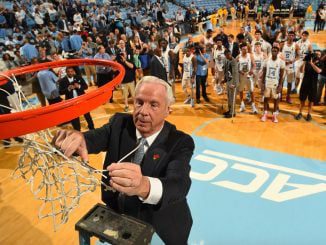Tuition at seven UNC institutions should be increased for nonresident undergraduates. That’s because current nonresident tuition at those institutions doesn’t cover the “education and related” (E&R) operating costs per student.
Education and related spending per student includes everything that directly affects student education. It includes expenditures for instruction and student services (like counselors and activities) as well as the instructional share of academic support, operations, maintenance, and institutional support (daily administration). It doesn’t include organized research or public service expenses. Nor does it include capital expenses or auxiliary enterprises (like dining).
This expense varies a lot from university to university. Some reasons for the variation include school size, the amount spent on student services, and whether the school engages in public service.

As of 2017-2018 — the most recent year for which expenditure data are available — Elizabeth City State, Fayetteville State, UNC-Chapel Hill, UNC School of the Arts, and Winston-Salem State all spent more per student on E&R expenses than nonresident students pay in tuition and fees.
And as of 2018-2019, UNC–Pembroke and Western Carolina can be added to the list. That’s the first year that NC Promise went into effect. NC Promise lowered tuition to $1,000 per year for in-state undergraduates and $5,000 per year for out-of-state undergraduates at Pembroke, Western, and Elizabeth City State. Tuition of $5,000 is far less than E&R spending at any school.
In 2017-18, the largest number of nonresident students were enrolled at UNC-Chapel Hill. That probably hasn’t changed. But as NC Promise attracts more out-of-state students, the number of nonresident students is expected to increase, putting more pressure on North Carolina’s budget.
At UNC School of the Arts, out-of-state students are getting a very large subsidy — more than $20,000 each. That figure is especially unpalatable because most School of the Arts students do not live and work in North Carolina after graduation. According to NC Tower, just 36% of UNC School of the Arts graduates were employed in North Carolina one year after graduation.
Moreover, low nonresident tuition rates aren’t in keeping with the stated goals of the UNC Board of Governors. At a tuition and fees workshop on Feb. 19, 2020, UNC System CFO Clinton Carter presented guidance to the Board for setting tuition. Specifically, he stated: “Rates for nonresident undergraduate students should be market-driven and reflect the full cost of providing nonresidents with a quality education.”
Subsidizing nonresident students also makes it harder to carry out North Carolina’s commitment to affordable education for its own citizens. Article IX, Section 9 of the North Carolina Constitution requires that tuition at the State’s public universities be “as far as practicable…free of expense.”
The shortfall between nonresident tuition and the costs to educate those students is a relatively minor problem in the UNC system, but one that is easy to fix. Increasing out-of-state tuition will allow North Carolina lawmakers to reallocate the current subsidy to higher priority uses, including ongoing needs in the UNC System.
North Carolina students and taxpayers should come first. Allowing nonresident students to attend UNC institutions for less than the full cost of attendance undercuts our state’s commitments to its own citizens.



